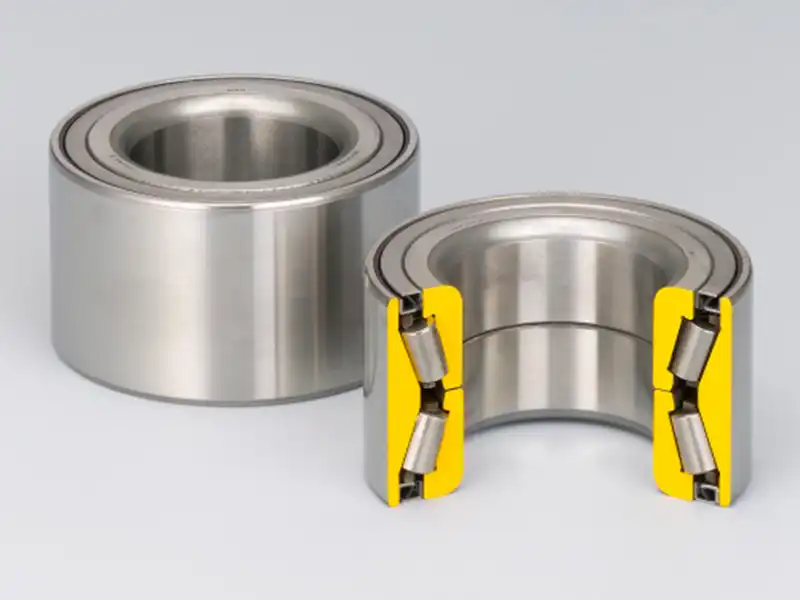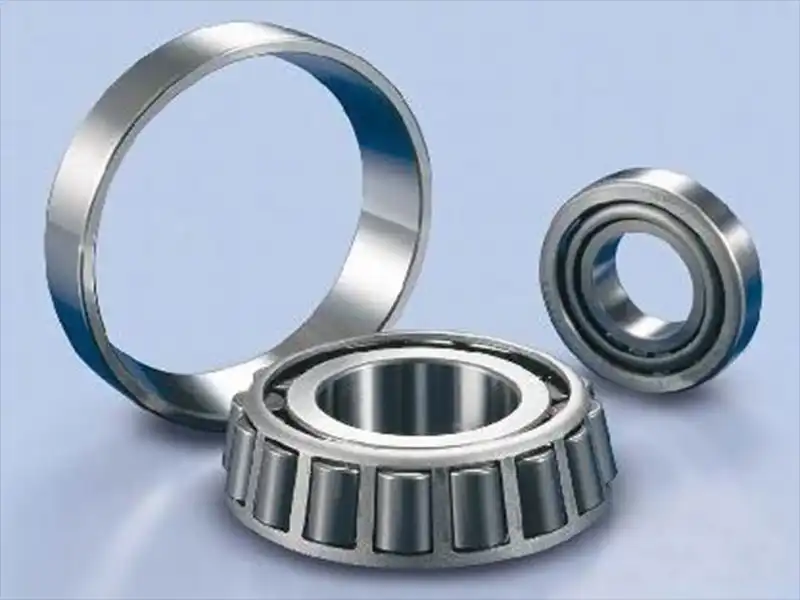How Do Cup Tapered Roller Bearings Reduce Friction and Wear?
Cup tapered roller bearings represent a critical innovation in mechanical engineering, offering an advanced solution to one of the most persistent challenges in mechanical systems: friction and component wear. These sophisticated bearings are designed to address the complex dynamics of rotational motion, providing superior performance in high-load and precision-demanding applications. By ingeniously distributing forces and minimizing contact friction, cup tapered roller bearings have revolutionized the way mechanical systems operate, ensuring greater efficiency, longer equipment lifespan, and reduced maintenance requirements.

What Makes Cup Tapered Roller Bearings Unique in Mechanical Engineering?
Cup tapered roller bearings distinguish themselves through an extraordinary engineering design that sets them apart from conventional bearing technologies. Unlike standard cylindrical or ball bearings, these specialized components feature a distinctive cone-shaped roller configuration that enables exceptional load-bearing capabilities and precision movement.
The fundamental uniqueness of cup tapered roller bearings lies in their geometric structure. The "cup" component typically comprises the outer ring, while the "cone" represents the inner ring with precisely machined tapered rollers. This asymmetrical design allows for superior load distribution across multiple contact points, which is fundamentally different from traditional bearing geometries. Engineers have meticulously developed these bearings to manage both radial and axial loads simultaneously, a capability that makes them indispensable in numerous high-performance mechanical systems.
The manufacturing precision of cup tapered roller bearings is another aspect that underscores their uniqueness. Each roller is crafted with microscopic tolerances, ensuring minimal variation between components. This precision engineering enables consistent performance across diverse operational environments. The tapered configuration allows for increased contact area between rollers and races, which translates to enhanced load-bearing capacity and reduced localized stress concentrations.
Materials science plays a crucial role in defining the unique characteristics of these bearings. Typically constructed from high-grade chromium steel or specialized alloys, cup tapered roller bearings are engineered to withstand extreme temperatures, corrosive environments, and sustained mechanical stress. The material selection process involves sophisticated metallurgical techniques that optimize hardness, elasticity, and resistance to wear.
Industries ranging from automotive manufacturing to aerospace engineering rely on these bearings for their exceptional performance characteristics. In automotive wheel hubs, for instance, cup tapered roller bearings must endure constant dynamic loads, temperature variations, and potential contamination. Their unique design ensures reliable performance under such challenging conditions, demonstrating their remarkable engineering sophistication.
How Do the Design Characteristics of Cup Tapered Roller Bearings Minimize Friction?

Friction reduction represents a critical performance metric for any mechanical bearing, and cup tapered roller bearings excel in this domain through multiple innovative design strategies. The fundamental approach to minimizing friction involves creating an optimized contact geometry that reduces resistance during rotational movement.
The tapered roller configuration plays a pivotal role in friction management. By introducing a non-perpendicular contact angle between rollers and races, these bearings distribute loads more evenly compared to traditional bearing designs. This geometric arrangement ensures that contact pressure is spread across a broader surface area, consequently reducing localized friction points and minimizing energy loss during rotation.
Lubrication strategies further enhance the friction-reduction capabilities of cup tapered roller bearings. Advanced lubricants, specifically developed for these bearings, create a microscopic film between moving components. This lubrication layer acts as a molecular barrier, preventing direct metal-to-metal contact and significantly reducing frictional resistance. Modern lubricants incorporate advanced additives that maintain their protective properties under extreme temperatures and pressures.
Precision manufacturing techniques contribute substantially to friction minimization. Computer numerical control (CNC) machining allows for unprecedented accuracy in roller and race dimensions, ensuring near-perfect geometric alignment. Smoother surface finishes and tighter tolerances directly correlate with reduced friction, as microscopic irregularities are effectively eliminated during the production process.
Thermal management represents another critical aspect of friction reduction in cup tapered roller bearings. The unique design allows for efficient heat dissipation, preventing temperature-induced expansion and maintaining consistent dimensional stability. By managing thermal characteristics, these bearings preserve their low-friction performance across diverse operational conditions.
Can Cup Tapered Roller Bearings Extend Machine Lifespan Through Advanced Wear Reduction?

Wear reduction stands as a paramount consideration in mechanical system design, and cup tapered roller bearings offer a sophisticated solution to this fundamental engineering challenge. The inherent design characteristics of these bearings contribute significantly to minimizing component degradation and extending overall machine lifespan.
The advanced load distribution mechanism of cup tapered roller bearings directly influences wear resistance. By spreading mechanical stress across multiple contact points, these bearings prevent localized material fatigue. Traditional bearing designs often concentrate stress on limited surface areas, leading to accelerated wear. In contrast, the tapered configuration ensures more uniform load transmission, substantially reducing material degradation.
Surface engineering techniques further enhance the wear-resistant properties of these bearings. Specialized coatings and surface treatments, such as nitriding, diamond-like carbon (DLC) coating, and advanced ceramic treatments, provide additional protection against abrasive wear mechanisms. These treatments modify the bearing's surface characteristics, introducing enhanced hardness and reduced friction coefficients.
Predictive maintenance strategies leverage the wear-reduction capabilities of cup tapered roller bearings. Advanced sensor technologies and condition monitoring systems can now track microscopic changes in bearing performance, enabling proactive maintenance interventions before catastrophic failures occur. This approach transforms bearings from passive mechanical components into intelligent, self-diagnostic systems.
Material science innovations continue to push the boundaries of wear reduction. Emerging composite materials and hybrid ceramic-metal bearing designs promise even greater durability and performance. Researchers are exploring nanotechnology-enabled surface modifications that could potentially create near-zero-wear bearing surfaces, representing a revolutionary advancement in mechanical engineering.
Conclusion
Cup tapered roller bearings represent a pinnacle of mechanical engineering innovation, offering unprecedented solutions to friction and wear challenges. Their sophisticated design, precise manufacturing, and advanced material technologies ensure superior performance across diverse industrial applications.
Luoyang Huigong Bearing Technology Co., Ltd. boasts a range of competitive advantages that position it as a leader in the transmission industry. Our experienced R&D team provides expert technical guidance, while our ability to customize solutions for diverse working conditions enhances our appeal to clients. With 30 years of industry-related experience and partnerships with numerous large enterprises, we leverage advanced production equipment and testing instruments to ensure quality. Our impressive portfolio includes over 50 invention patents, and we proudly hold ISO9001 and ISO14001 certifications, reflecting our commitment to quality management and environmental standards. Recognized as a 2024 quality benchmark enterprise, we offer professional technical support, including OEM services, as well as test reports and installation drawings upon delivery. Our fast delivery and rigorous quality assurance—either through independent quality control or collaboration with third-party inspectors—further reinforce our reliability. With many successful collaborations domestically and internationally, we invite you to learn more about our products by contacting CHG at sale@chg-bearing.com or calling our hotline at +86-0379-65793878.
References
1. SKF Bearing Handbook, 2020 Edition
2. TIMKEN Technical Journal of Bearing Mechanics, Vol. 45, 2019
3. International Journal of Mechanical Engineering, "Advanced Bearing Technologies" (2021)
4. NASA Technical Memorandum on Precision Bearing Design, 2018
5. Society of Automotive Engineers (SAE) Bearing Performance Report, 2022
6. Journal of Tribology, "Friction Reduction in Precision Bearings" (2020)
7. Materials Science and Engineering Review, Bearing Material Innovations (2019)
8. International Conference on Mechanical Engineering Proceedings, Bearing Design Symposium (2021)
9. ASME Technical Paper on Load Distribution in Tapered Roller Bearings (2020)
10. Advanced Manufacturing Technologies Journal, "Next-Generation Bearing Design" (2022)

